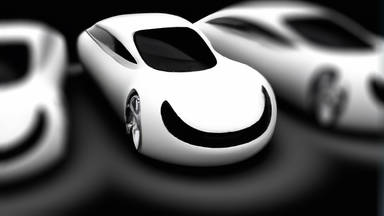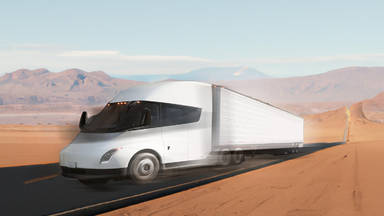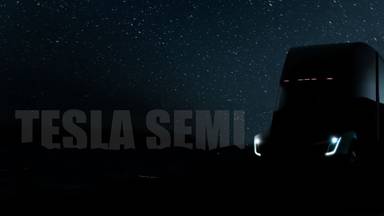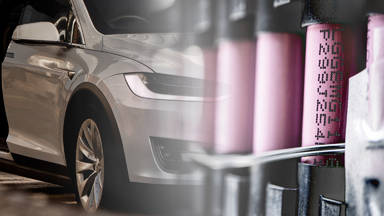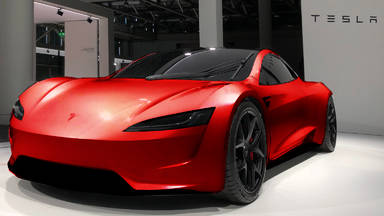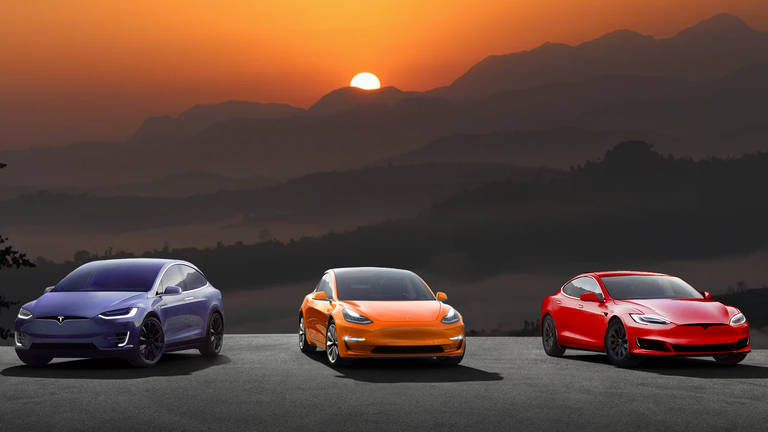
An updated Tesla can make it from start to destination, usually with zero interventions. Despite this, many reputable news sources continue to describe the competition as tracking close behind. So here's why Tesla is not only crushing the competition today, but why they will continue to annihilate the race to full self-driving moving forward.
Let's take a look at the situation today, Tesla so far had more than a total of 3 billion miles on autopilot. Meanwhile, second place goes to Google's Waymo, which has a total of around 20 million miles. Not only was there already a 150 times gap between first and second place, but Tesla has also been exponentially growing their lead.
Just six months before reaching 3 billion miles on autopilot, Tesla was just at 1.88 billion miles. Since then, it is likely that Tesla has further accelerated their data collection rate given record vehicle sales for Tesla throughout the pandemic. But even if they simply fall the same pace, they would be at well over 4 billion total miles driven today.
What's the secret that the rest of the competition is missing?
The first major difference between Tesla and the competition is their radically different fundamental approach. Tesla has mostly been using cameras to gather autonomous vehicles, while most of the competition has been focused on getting LIDAR to work.
LIDAR stands for Light Detection And Ranging, and it is likely the first technology you would consider when trying to develop an autonomous vehicle. LIDAR sends out light, and times how long it takes for the light to bounce off various objects and return to its sensors. Using this information, LIDAR is able to essentially map out its surroundings.
A normal camera, on the other hand, simply capture the light rays bouncing off of its lenses. It does not automatically create a 3D map, or a 3D sketch of the surroundings. As a result, it is completely up to the programmers to figure out how to convert a 2D image into 3D or even 4D data that the computer can understand.
You may ask why Tesla decided to not use LIDAR and deal with yet another obstacle in the road to full self-driving? Elon Musk has often pointed out that we as humans do not have lasers shooting from our heads in all directions when we are driving. We simply have two cameras, and for the most part, are able to drive exceptionally. Of course, we have plenty of unfortunate crashes every single year, but these are virtually all due to lapses in judgment, as opposed to not having enough data. Thus, the argument suggests if two cameras are more than enough for humans, eight cameras should be overkill in terms of data for AI.
Anyway, although more difficult to implement, Tesla has over the years built up their system to rival LIDAR systems. And today cameras have enabled them to destroy LIDAR-dependent systems in terms of interpretation. LIDAR may have greater accuracy in terms of mapping out their surroundings to this day, but cameras have proven to be invaluable when it comes to actually understanding surrounding data.
For instance, if you come across a parking lot on the side of the road, both systems would recognize the obstacle but LIDAR-based systems do not exactly understand what the obstacle is. Meanwhile, Tesla's cameras know that a line of cars on the side of the road is the same thing as a line marking. More importantly, Tesla's system also knows that a line of cars means that it should potentially anticipate someone backing out, so Tesla's focus on cameras was spot on. As this allows their cars to actually interpret what's going on around them, as opposed to just differentiating between obstacles and not obstacles. Thus, the first major benefit for Tesla is their exponentially better interpretation system.
Moving on, we have the actual processing of this information. Google, along with other key competitors, have placed a brunt of their efforts into precisely mapping out various cities for a while now. Google has been sending out mapping cars which are very similar to Google maps street view cars, but these mapping cars are way more precise and collect much more data. The mapping cars capture everything around them down to a centimeter. All of the lane merges, the traffic lights, the traffic signs, the fire hydrant, everything.
Once the data collection is done, their regular self-driving cars can start driving on these roads with no problem whatsoever, but this is not really self-driving. Yes, that cars are driving themselves. However, there is very little cognition involved in the process. Google self-driving cars are simply comparing what they scan to what the mapping cars previously scanned. As you can see, this requires significantly less artificial intelligence and requires constant updating to keep the system fully working. This might work in densely populated urban cores, where the mapping cars can go out on a regular basis, and constantly update the map. However, in areas that are not mapped the soft driving car is actually not self-driving at all.
Conversely, Tesla has focused their efforts onto artificial intelligence, and making decisions in real-time, based on what the cameras see. Elon Musk describes that using HD maps is a really bad idea, as it cannot change, and it cannot adapt. Although this does provide a pretty solid solution for the short term, he believes that this takes away from developing truly full self-driving cars, and Thus, he refuses to use HD maps.
With That being said, if Tesla wants to develop full self-driving without relying on HD maps, then they are going to need a lot of data, and a lot of trial and error, and that brings us on to Tesla's next big advantage which is their extensive fleet. Tesla has sold over 300,000 cars just this year. While this is nothing compared to Volkswagen and Toyota's several million cars per year sales, this is leagues ahead of any other autonomous car company.
General Motors does have its Super Cruise self-driving technology, but this technology is currently only available in the Cadillac lineup, and the fleet is quite limited. As for Waymo, they only have a miniscule fleet of 600 cars. To make things worse, Google owns all of these cars, and they have to pay for the operation of all of them aside from the small revenue they get from their limited ride sharing service.
Meanwhile, Tesla is a very profitable company with hundreds of thousands of cars that are being driven for free for Tesla. By pushing out self-driving to the public, Tesla has been able to employ hundreds of thousands of people to give them free data on a daily basis.
Also not only is Tesla able to gather data by letting individuals use their self-driving technology around the world, but they are also able to collect data about how their hundreds of thousands of drivers drive when self-driving is turned off. This is honestly even more valuable, as it allows Tesla's neural network to constantly learn from how humans drive in scenarios where drivers have deemed it is not safe or efficient for self-driving to be used. When you are working towards figuring out the tail end of self-driving technology, this information is invaluable as it is usually very difficult if not impossible to artificially replicate. As a result, Tesla's self-driving system is able to consistently learn about humans dealing with one in a billion, and one in 10 billion chance scenarios. Thus, completing the final parts of full self-driving.
The final reason Tesla will win the race to autonomy is that they are just software updates away from making full self-driving a reality. Considering that these are just over the air updates, as opposed to selling new vehicles, Tesla can easily roll out their new software to existing customers and they are already rolling out the first stage of level 5 autonomy. Right now, it is just a private beta but it is expected that it will roll out to the general public by the end of the year. With their ability to simply update their users over the air to full self-driving, it is no question that they will have the easiest time introducing the technology to the market at this point without any advertisement.
At the end of the day, Tesla has chosen a different path from the rest of the competition. The competition has chosen to figure out methods to make self-driving easier for computers, while Tesla has chosen to simply model self-driving after how humans drive, despite the difficulty.
As a result, unlike the competition, Tesla cars interpret data like we do. They analyze data like we do, and then they try to make decisions like we do. This in conjunction with their vast fleet and rapid update ability, will allow Tesla to maintain their lead in self-driving technology for the foreseeable future.
